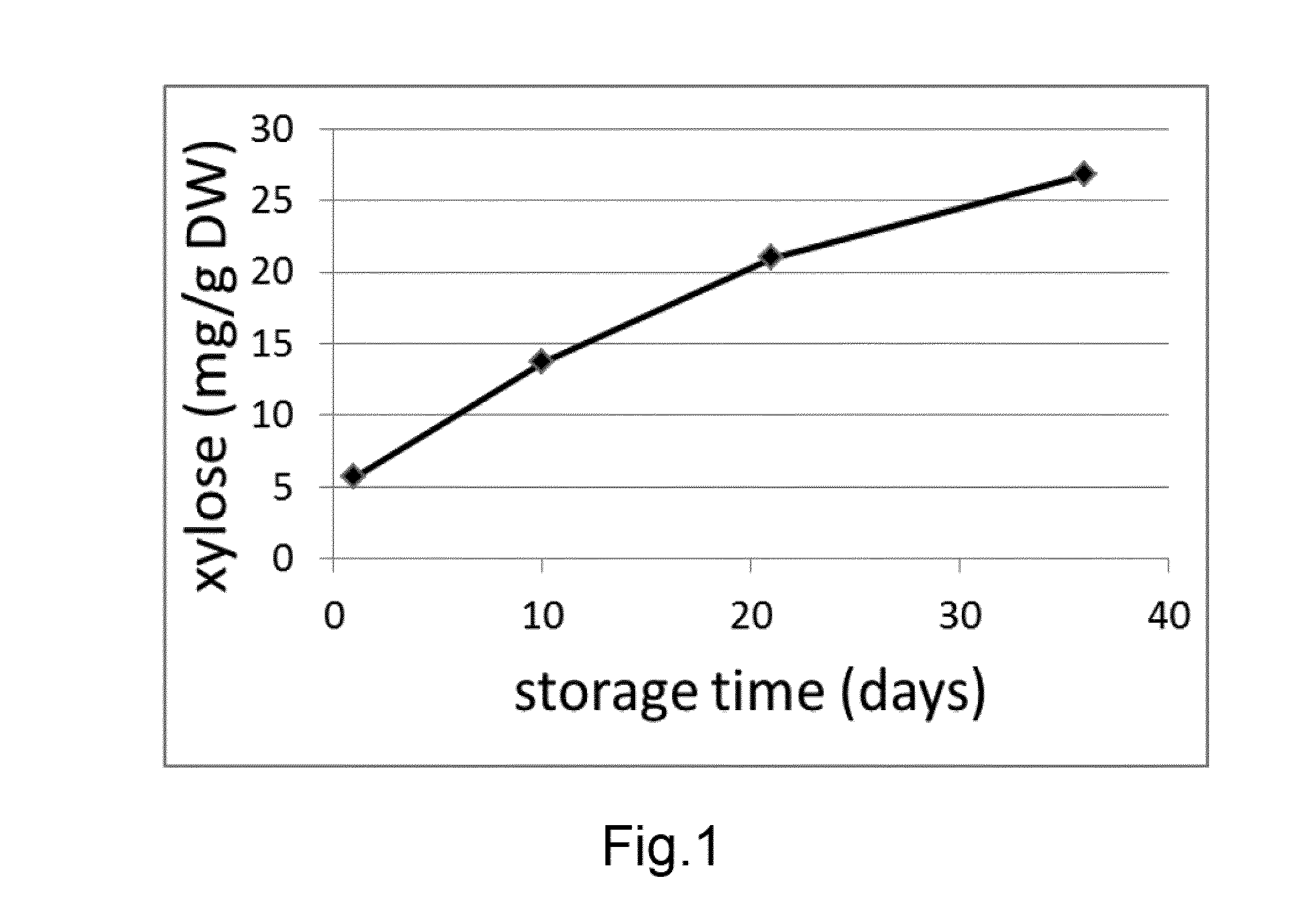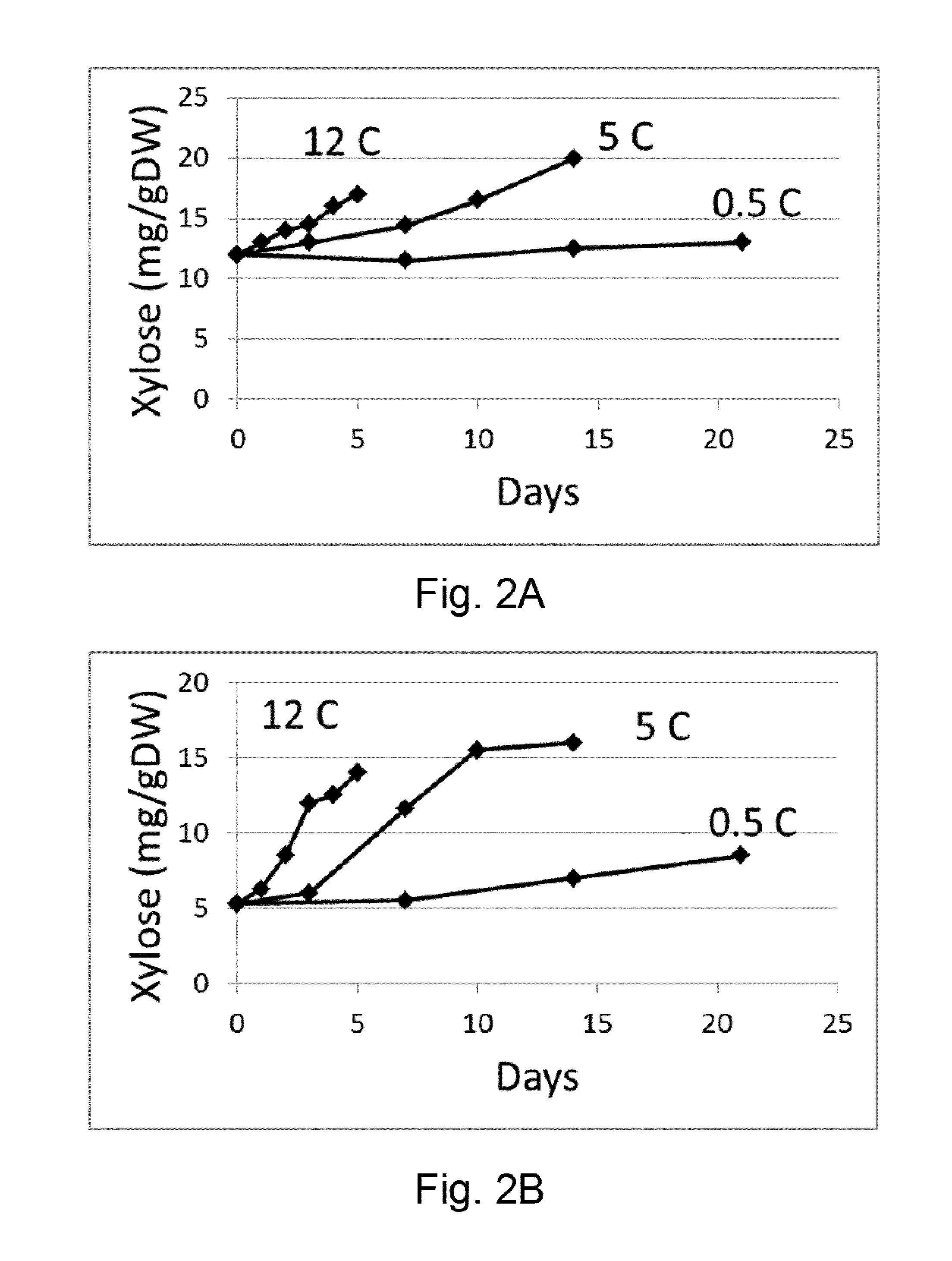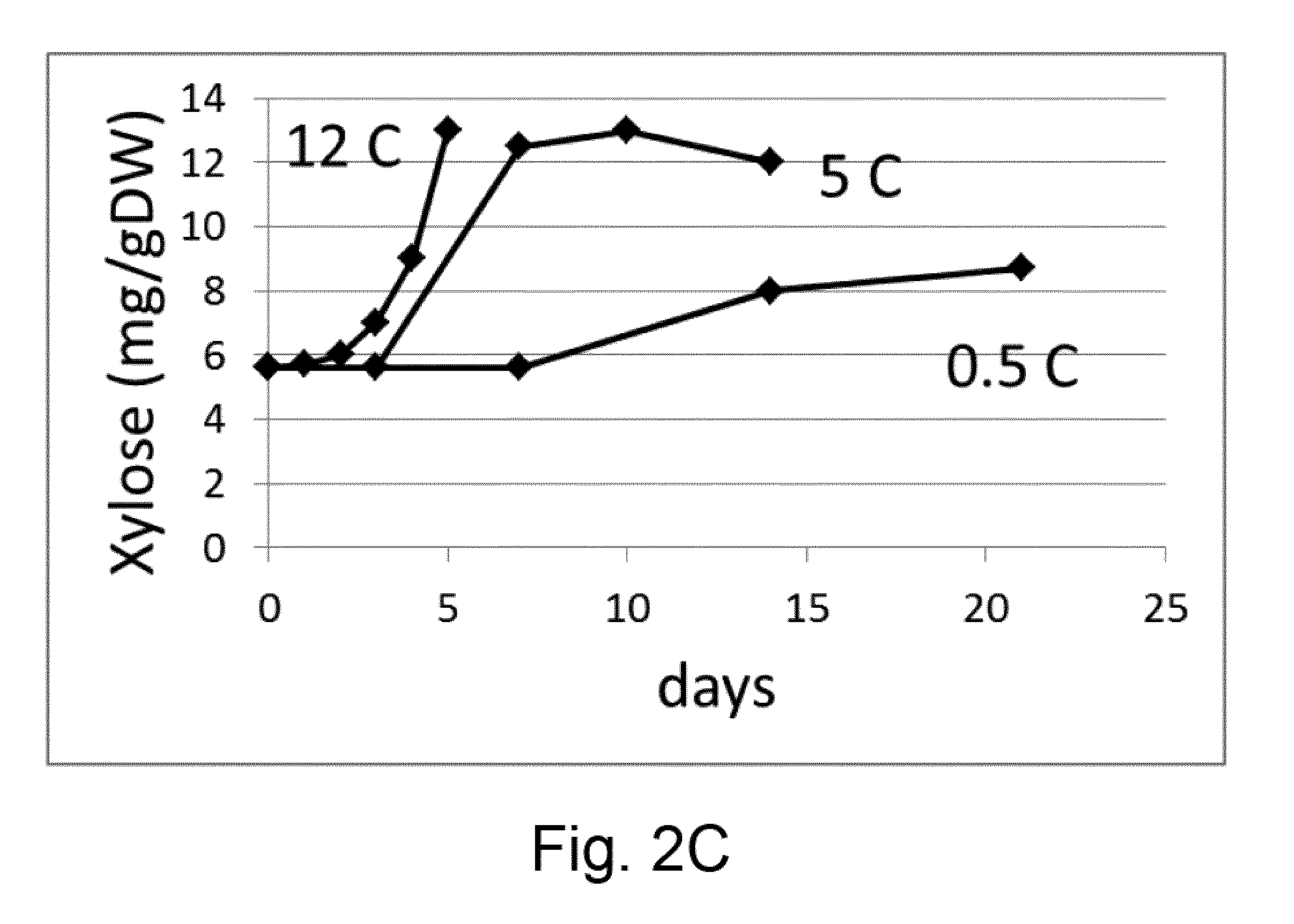A Method for Determining the Vase Life or Storage History of One or More Cut Flowers, Wherein the Method Comprises Assaying Xylose Concentration or Beta-Xylosidase Expression/Activity
- Summary
- Abstract
- Description
- Claims
- Application Information
AI Technical Summary
Benefits of technology
Problems solved by technology
Method used
Image
Examples
example 1
Experimental Parameters
[0246]Product: Avalanche roses; source: The Netherlands.
Pretreatment conditions: Chrysal RVB overnight at 4° C.
Storage conditions: Dry in carton flower boxes at 4° C. up till 32 days.
Rehydration conditions: Chrysal RVB for 2 h at room temperature.
Measurements: sugars and starch in outer petals.
Results:
[0247]HPLC chromatograms showed a number of clearly definable peaks that were identified using authentic standards as being glucose, fructose, sucrose, myo-inositol and, in addition, the rare sugar xylose.
[0248]Concentrations of both glucose and fructose showed a slight increase over time, levelling off at later time points. Glucose increased from 60 to about 70 mg / gDry Weight (DW); fructose increased from 100 to about 140 mg / gDW. Sucrose (25 mg / gDW) and myo-inositol (6 mg / gDW) did not show a clear change over time. Starch levels in petals at the start of the experiment were low and decreased to zero within 10 days.
[0249]There was a significant increase in xylose...
example 2
Experimental Parameters
[0250]Product: roses Avalanche, Akito, Happy hour; source: The Netherlands.
Pretreatment conditions: heads were dipped in 200 ppm chlorine solution to prevent botrytis infection.
Storage conditions: dry storage of sleeved bunches in carton boxes for different periods of time at 12° C. (5 days), 5° C. (13 days) and 0.5° C. (22 days).
Rehydration conditions: Chrysal RVB for 2 h at 5° C.
Measurements: sugars in petals; xylosidase mRNA abundance in petals and leaves of selected treatments.
Results:
Sugars in Petals
[0251]Glucose concentration in petals showed an increasing trend with storage time and this trend was not clearly influenced by the storage temperature. For Avalanche, Akito and Happy Hour, initial glucose levels were 70, 50 and 40 mg / gDW and end levels were 90, 90 and 50 mg / gDW, respectively.
[0252]Fructose levels showed a slight increase over time, and levels were little influenced by the temperature. For Avalanche, Akito and Happy Hour initial levels of fruc...
example 3
Experimental Parameters
[0257]Product: rose cv. Akito; source: The Netherlands
Pretreatment conditions: heads were dipped in 100 ppm chlorine solution to prevent botrytis infection
Storage conditions: dry storage of sleeved bunches in carton boxes for different periods of time at 12° C. (maximum 12 days), 5° C. (maximum 21 days) and 0.5° C. (maximum 42 days)
Rehydration conditions: Chrysal RVB for 2 h at 5° C.
Measurements: sugars (glucose, fructose, sucrose, myo-inositol, methyl-β-D-Glucopyranoside, and xylose) in outer petals and leaves (the tip and 2 outer small leaflets, closest to the tip leaflet from the first or second foliate leaf complex under the flower head); xylosidase mRNA abundance in petals and leaves of selected treatments
Results:
[0258]Sugars in Petals of Roses cv. Akito
[0259]Glucose and fructose concentrations in petals showed an increasing trend with storage time and this trend was not clearly influenced by the storage temperature. Initial glucose level was 55 mg / gDW an...
PUM
| Property | Measurement | Unit |
|---|---|---|
| Time | aaaaa | aaaaa |
| Concentration | aaaaa | aaaaa |
| Cell angle | aaaaa | aaaaa |
Abstract
Description
Claims
Application Information
 Login to View More
Login to View More - R&D
- Intellectual Property
- Life Sciences
- Materials
- Tech Scout
- Unparalleled Data Quality
- Higher Quality Content
- 60% Fewer Hallucinations
Browse by: Latest US Patents, China's latest patents, Technical Efficacy Thesaurus, Application Domain, Technology Topic, Popular Technical Reports.
© 2025 PatSnap. All rights reserved.Legal|Privacy policy|Modern Slavery Act Transparency Statement|Sitemap|About US| Contact US: help@patsnap.com



